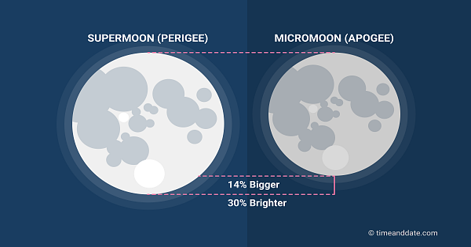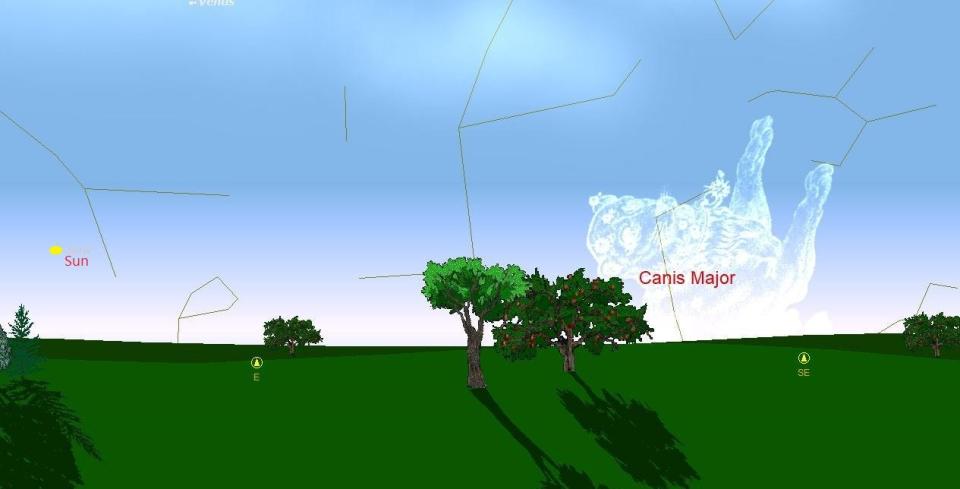Sky Shorts: 'Dog Days' of summer reflected in our skies

Starting July 3 and ending Aug. 11, those of us in the northern hemisphere will experience a period of particularly hot and humid weather we refer to as the “Dog Days” of summer.
Why is this stretch called the “Dog Days”?
This sweltering period coincided with the rising of Sirius, the Dog Star at sunrise, hundreds of years ago. Sirius is the No. 1 brightest star in our sky, next to our sun. Sirius is a part of the constellation Canis Majoris, or the Greater Dog.
In ancient Greece, Egypt and Rome, it was believed that the combined heat of the sun and Sirius created the hot and humid temperatures. Interestingly, the name "Sirius" stems from the Ancient Greek seirios, meaning “scorching.”
The Ancient Egyptians used Sirius as their “watchdog” for the yearly flooding of the Nile River. Yearly, when Sirius rose right before the Sun, the Nile River would flood. The flooding would leave behind rich soil for planting in this desert region.
The rising of Sirius became so important that the ancient Egyptians started their new year on the New Moon following the rising of Sirius in the east. The ancient Romans and Greeks were not as pleased to see Sirius rise before the sun. It signaled a time when evil was brought to their land in the form of drought, discomfort and disease.
But there have been changes over the centuries. Weather records show that hot weather periods vary from year to year, so the hottest days may not fall into the dog days period.
Latitude position also affects the rise of Sirius, which rises earlier in southern latitudes and later in northern latitudes. The position of our stars in the night sky shift independently from our calendar seasons, due to precession or according to the way Earth wobbles. About every 50 years or so, the night sky swifts one degree. Therefore, thousands of years from now the dog days will not occur in the summer. Around 13,000 from now, Sirius will rise with the sun in the middle of winter! Of course, then there will be a whole new meaning for the “Dog Days” of winter!

Space Exploration
Update: NASA has announced the first science images for the James Webb Space Telescope will be released July 12.
Night Sky for July
Planets and the moon – The spectacular planet array is still on display, for the first week of July, featuring seven planets, five which are visible. The visible planet lineup is Mercury, Venus, Mars, Jupiter and Saturn. After the first week, Mercury departs the morning sky. Mercury returns to the evening sky, low in the west-northwest late in the month. Best night to view Mercury will be July 29 when it is three degrees below the crescent moon. Binoculars will help to locate Mercury. Saturn appears next, rising in the east just before 11 p.m. July 1 and brightening to magnitude 0.3. Neptune has crossed into Pisces from Aquarius where it spent many years. Neptune rises soon after midnight in early July and can be found 12 degrees west of Jupiter. You will need binoculars or a telescope for viewing Neptune. Jupiter rises nearly one hour after midnight July 1 and just over one hour before midnight July 31. Jupiter brightens by month’s end and reaches a stationary point July 29. Mars rises shortly before 2 a.m. July 1 and grows slowly brighter. Mars continues to drift eastward. By month’s end, it rises soon after midnight. Venus rises at 3:45 a.m. July 1 and slides eastward during the month. Dazzling Venus spends three days, July 16-18, crossing the extreme northern edge of Orion. Uranus is located between Venus and Mars and can be enjoyed through binoculars.
We will have the closest Super Moon of the year, on July 13, when the full moon reaches the closest point in its elliptical orbit of Earth, resulting in a slightly larger than usual apparent size of the Moon as viewed from Earth. The Moon pairs with Saturn on July 15, Neptune on July 17, Jupiter on July 18, Mars on July 21, Uranus on July 22 and Venus on July 26.
Constellations:
West – Look for the bright star Regulus, which is part of Leo, the Lion. Head upward to a brilliant star Arcturus. Above Arcturus is a semi-circle of stars, the Northern Crown or Corona Borealis. Continuing up and high overhead, you will see a keystone or crooked square shape, which is the body of Hercules.
North – The Big Dipper is beginning to swing down in the northwestern sky. Follow the two stars at the end of the cup to the next bright star, Polaris, or the North Star. The constellation Cassiopeia, the “W” shape is below Polaris.
East – Look for a bright blue, white star which is Vega. Down and to the left is Deneb and continuing to the right is Altair. When you connect these three bright stars you have made the Summer Triangle. Now head back to Deneb, imagine this to be the tail of Cygnus, the Swan. To the right will be three stars in a line. These would be the outstretched wings. Extending from the wings would be the long neck and head of the swan. The head of Cygnus is a double star, Albireo.
South – Look for the red, orange star, Antares, which is the heart of Scorpius.
Binocular highlights – Find Hercules and scan around the part of Hercules that faces Corona Borealis. You will see a fuzzy object which is the finest globular star cluster in the northern skies! Starting inside the Summer Triangle, scan all the way to the left of Antares, in the southern sky. You will see an abundance of stars which are part of our Milky Way galaxy.
For further night sky details, maps and audio, visit my website www.starrytrails.com.
Visit the Hoover Price Planetarium:
The planetarium offers daily shows from Tuesday through Saturday. Visit www.mckinleymuseum.org for show dates and times. Planetarium shows are free with museum admission. Seating is limited and will be on a first-come, first-serve basis. The planetarium is inside McKinley Presidential Library & Museum, 800 McKinley Monument Drive NW in Canton. For more information, call the museum at 330-455-7043.

This article originally appeared on The Repository: Sky Shorts: 'Dog Days' of summer reflected in our skies

